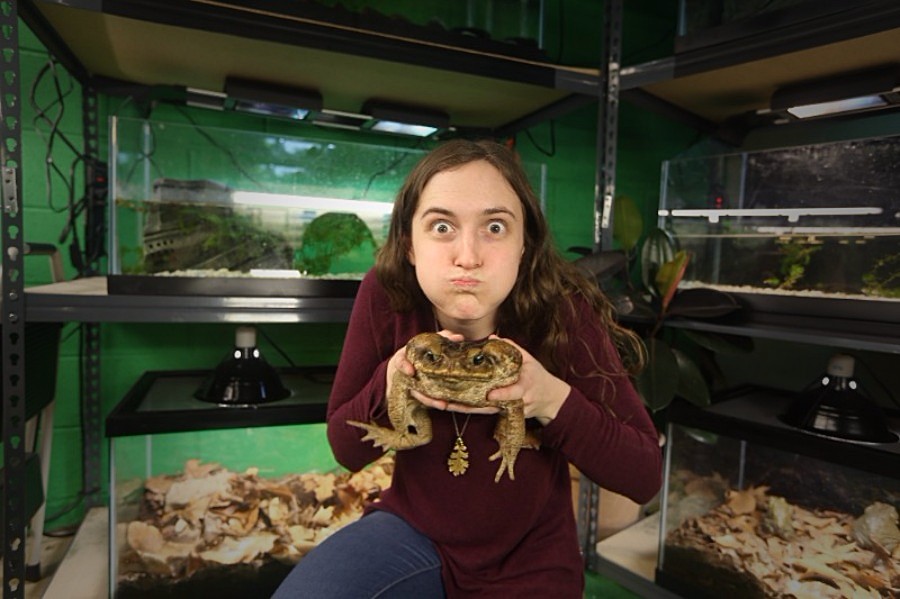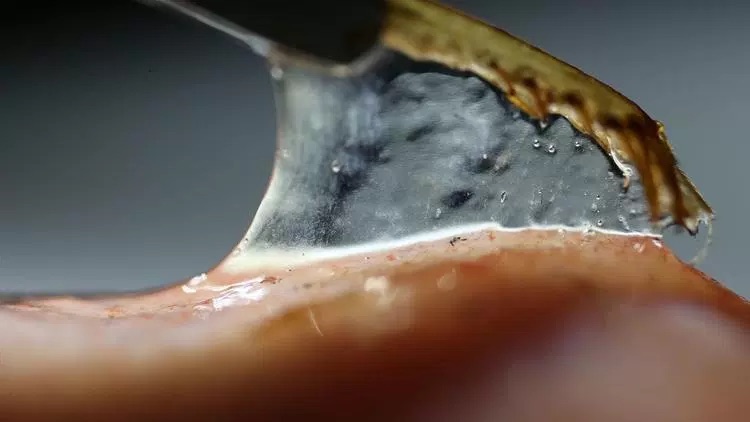“Frog tongues use a sticky fluid to adhere to prey, cat tongues are different. The tongue is also very soft, not as soft as frog tongues, but the cat tongue has these sharp barbs in it that allow them to groom their fur really efficiently and rip meat off of bones and things like that.”

This is not your typical coffee shop chatter, but this is a conversation with which Alexis Noel, a Ph.D. candidate at Georgia Tech, has become extremely comfortable.
Alexis arrived at Georgia Tech as an eager undergrad, excited to study aerospace engineering. Not long after she began, she realized that, though she loved her aerospace classes, she was jealous of her Mechanical Engineering friends who “got to work with their hands.” She kept an Aerospace minor but made the switch in her sophomore year to Mechanical Engineering. She dove head-first into her new major by enrolling in Georgia Tech’s BS/MS program, a five-year program that allows Mechanical Engineering students to receive both a Bachelor of Science and Master of Science with five years of course work. After completing her Bachelor Degree, Alexis knew that she wanted to continue her studies at Georgia Tech, but wasn’t sure what path to take. That is when she met Dr. Hu.
“I’m working with ants,” one of Alexis’ good friends told her one day. “ANTS? In an engineering lab?” Alexis was stunned. After only a few meetings with Dr. Hu, Alexis had found her intellectual home. “It was a great environment to work and I was getting to have fun playing with frogs,” said Alexis. In her time in Dr. Hu’s Biolocomotion lab, Alexis has had the opportunity to work with all manners of creepy crawlies. In a recently published paper, Alexis discusses the frogs’ use of viscoelastic tongue and non-Newtonian saliva to catch their prey. Or, as her NPR interview so succinctly put it “Pretty disgusting snot-like spit’ lets frogs catch their prey.”

Alexis’ most recent project was inspired by her own furry friend, rather than a lab subject. One day Alexis noticed that her house cat appeared to be wrestling with a blanket on the couch. Upon closer inspection, she found that the cat’s tongue was stuck to a microfiber blanket. After detangling her cat, Alexis asked herself a question that seemingly few have asked; “What is going on with my cat’s tongue?” After diving back into her research, Alexis discovered that her cat’s tongue is not only unique but may have more practical applications. After studying the makeup of several cat tongues, including a tiger’s tongue donated by the Atlanta zoo, Alexis has created a 3D-Printed tongue that can do a lot more than detangle fur. Among its other applications, Alexis is excited to get back to her aerospace roots by working on adapting her cat tongue technology to be able to pick up rocks and debris in outer space. Alexis is excited to explore all of the ways that she can commercialize her technology in the future and plans to work closely with VentureLab to guide her through the process.
